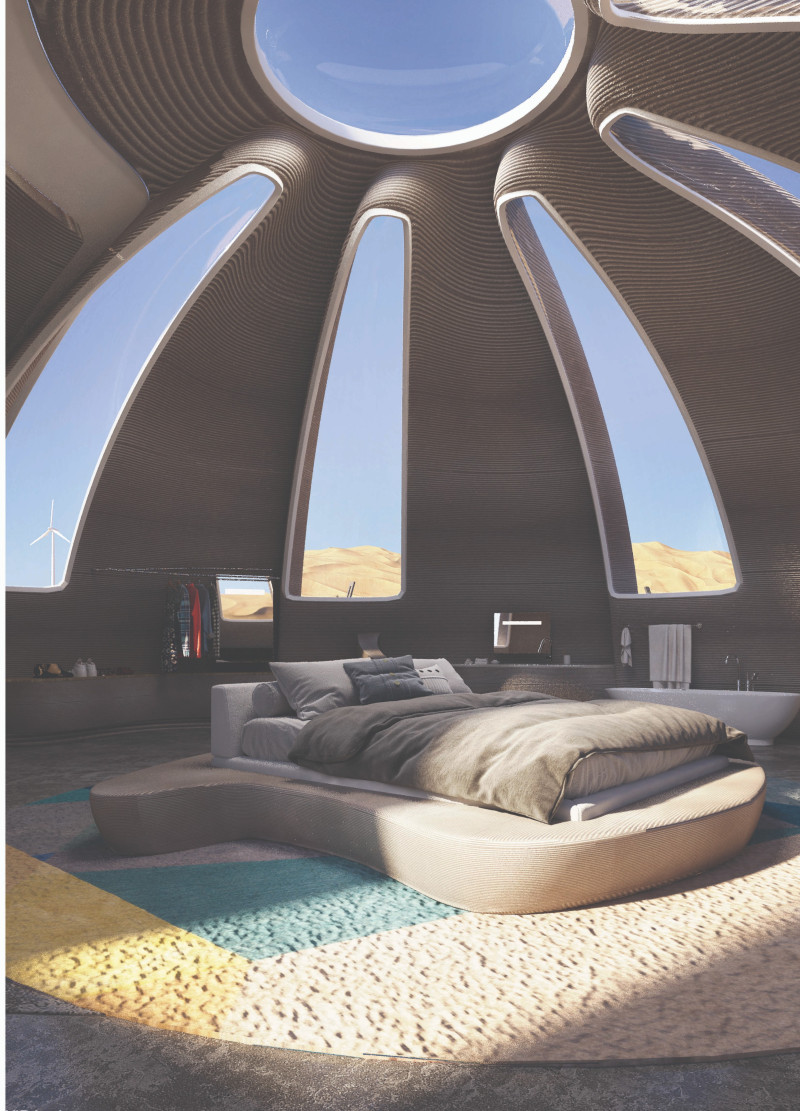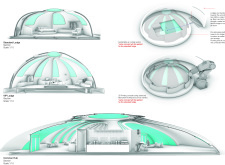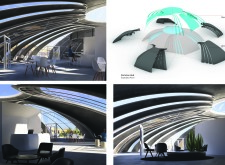5 key facts about this project
The Arabian Oryx Protected Area is situated in the southern region of the UAE and is known for hosting the largest population of Arabian Oryx in the world. The design aims to connect closely with the surrounding natural environment while promoting a sense of openness and transparency. The overall concept is to create an engaging experience for visitors that showcases a commitment to sustainable practices.
Site Integration
The design encourages interaction between the built environment and the natural landscape. Structures are crafted to appear in motion, highlighting their relationship with nature. This approach enhances the visual connection between architecture and the landscape. Visitors are invited to appreciate both the beauty of the structures and the wildlife found in the area.
Material Application
Advanced fabrication methods are integral to the construction process. The design utilizes 3D printing for concrete used in the lodges and incorporates prefabricated Glass Reinforced Concrete (GRC) panels for the Common Hub. These materials are chosen to reduce waste and increase efficiency, reflecting modern objectives in sustainable architecture.
Sustainable Design Features
Lodges are oriented toward the northwest to take advantage of natural airflow. This setup allows air to be collected and filtered, making its way through a water tank located beneath the buildings, which helps cool the interior spaces naturally. The air cooling system relies on the environment, which reduces the dependence on mechanical cooling solutions.
Functional Design Elements
Platforms beneath the lodges serve dual purposes, acting both as water tanks and storage spaces. This thoughtful design ensures that necessary systems are integrated within the building’s framework. The plumbing and air cooling systems work in conjunction, showcasing an effective design strategy that balances functionality with sustainability.
Large openings are included throughout, allowing natural light to illuminate the interiors. This feature creates bright and welcoming spaces that enhance the overall visitor experience while maintaining a clear connection between indoor and outdoor environments.























































